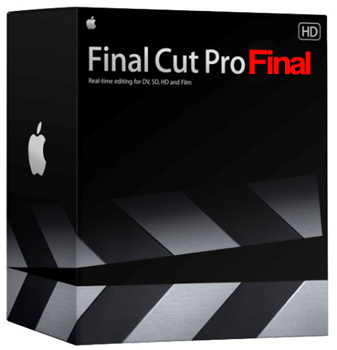Final Cut Pro – Is It Final?
Let me start out by stating that I’ve never used FCP. I’ve edited (as a motion graphics designer) on A/B roll systems, Discreet Logic Edit* (so I know the pain of EOL announcements), AVID, and Premiere Pro CS5. I would never do an upgrade – especially when I’m in the middle of a project, so the worldwide outcry by the professional editing community has me a bit puzzled. Yes…I know Apple pulled a fast one, especially when you look at their pre-release announcements and hints as to what was coming.
If you read the posts on the CreativeCow.net FCPX forum, you can feel the pain of those who’ve been screwed (or so it appears) by Apple. It’s not a fanboy issue – it’s a real, “how the hell will I continue to make my livelyhood which I built my business on…” issue. From what I read, you really can’t base a multi-editor facility, which might use tape sources, projects from previous versions of FCP (iMovie files open just fine, though), and a raft of other issues which quickly strip the “Pro” from Final Cut Pro.
Some are yelling “It’s a new paradigm! Just use it and you’ll love it!” Others are jumping ship, because they see the writing on the wall. I felt the same way when we got the EOL notice from Discreet Logic. Edit* was a great NLE, fast, full-featured, and a professional tool you could use in a broadcast facility, with clients sitting over your shoulder, without feeling like you were working with a toy. But they killed it. My gut feeling was that they killed it because it was too good, and competed with the high end products from which it was developed. I’ll never know – but we moved on – to AVID, which promised everything, but never delivered. They sold us an SD system based on Firewire, assuring us that it would upgrade to HD with just a card. The card was killed before even being released, and the AVID systems became very expensive orphans, because we (the end users) had realized that the whole thing was way too complex, you had to have AVID training (think expensive) just to recognize what the icons were, and their mass storage system, when it worked, was way over rated.
Luckily we convinced our engineering department to purchase a seat of the Adobe Production Bundle CS3. The AVID edit rooms quickly became capture stations only, and we found we could work way faster, share projects between editors (once we purchased more seats of CS3), and have media ready for air without ever going to tape (what a concept!). The parent corporation, which owned 28 television stations, caught wind of what we were doing, and sent a team of their corporate engineers up to “kick the Adobe tires”. They were amazed, and since then, the entire 28 stations have been part of a migration to the Adobe software. It made sense anyway, since Illustrator and Photoshop have been the cornerstones of television production for years, from a design standpoint. It just makes sense to use motion graphics and editing products which seamlessly integrate with the graphics side of things.
And…to further sweeten the pot…Adobe listens to its’ users. Not only that, but it involves its’ users in the development process. If you don’t believe it, go to labs.Adobe.com, and check it out. They lay what they’re working on right out on the table, and let users in on the early stages of development. You won’t find the double secret Apple bull going on at Adobe – they want a user base that’s involved. No…not every product hits one out of the park, but when they get it wrong, they own up to it. Witness the Soundbooth software, which was the audio workstation software that was bundled with the Creative Suites as of CS3. Adobe Audition had been the digital audio software of choice prior to that, but Adobe choose to dumb it down and bundle it with the Creative Suites, keeping Audition as its’ pro solution, which you had to buy separately. I used Soundbooth for much of my audio work on my video productions, and found it to be a limited, albeit useful tool for basic audio production (voice-over tweaks, soundfx editing, and music tracks). The pros screamed bloody murder, and kept screaming on every public venue they could find. As of CS5.5, Soundbooth will be a dead horse, and Audition is coming back into the Adobe CS fold. This is a perfect case of Adobe listening to the end-users.
By the way, I am a user of Adobe products, and in no way paid by Adobe for anything. I’ve used Adobe products since I went with Photoshop 3.0, back when most television graphics were being done on a quarter of a million dollar dedicated system (we used Dubner, which had a “paint” program built in), and I’ve gone on to use, and love using, the whole suite of products. There’s no drama going on behind the scenes, and Adobe shows very little sign of becoming a phone and digital gadget company, bent on the almighty profit margin.
